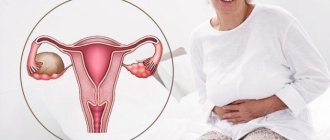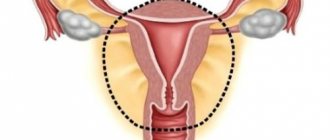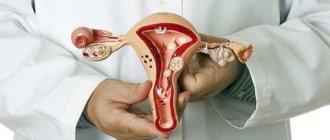Last update: 10/07/2019
Uterine fibroids are a tumor of the uterine myometrium, sometimes causing a lot of problems: from menstrual disorders to infertility. There are cases of degeneration of fibroids into sarcoma. It is impossible to predict whether therapy for a tumor will bring a positive result: women often endure pain for years, hopefully trying all possible remedies. The doctor’s words about the need to remove the uterus plunge the patient into confusion: is it worth agreeing to the operation - after all, there are no “extra” organs in our body?
- Indications for hysterectomy
- Operation methods
- Consequences of Hysterectomy
- Nuances of the postoperative period
- Questions about mime with Elena Malysheva
Hysterectomy, as removal of the uterus for fibroids is called, is a last resort. A radical solution is proposed when other methods are unproductive, there is no other way. For a patient on the verge of a difficult choice, it is important to know everything about the reasons and possible consequences of hysterectomy.
Is it necessary to remove the uterus for fibroids?
After a qualified doctor diagnoses uterine fibroids and reports that the most effective method of treatment is complete cupping of the reproductive organ, many women have a lot of questions about whether it is necessary to use this type of therapy and in what cases it is possible to do without it .
As a rule, surgery to remove the uterus is performed only on those females who already have children and do not plan to become mothers again in the future. In such situations, this operation is even useful, since it serves as the most reliable method of contraception and 100% protects against unwanted pregnancy and many diseases of the genitourinary system. When diagnosing myomatous nodes in young representatives of the fair sex, medical workers try not to remove the uterus, but to make all available efforts and experience to preserve the girl’s reproductive function and prescribe another, more gentle type of treatment for the benign formation that has arisen.
There are the following indications for complete removal of the uterus for fibroids:
- progression of fibroids of significant diameter, which exceeds 13 weeks;
- pathological formation is accompanied by pronounced symptoms;
- there is a tumor of medium or large size, and the woman does not plan to have children in the future;
- in addition to fibroids, a pathology such as prolapse or prolapse of the uterus progresses in a woman’s body;
- a neoplasm of the sambucous type was diagnosed, which is accompanied by serious hemorrhages and severe pain;
- a pedunculated myomatous node has been identified, which, if twisted, can provoke necrotic processes in the cavity of the reproductive organ;
- with a high probability of transformation of a benign formation into a malignant one;
- significant size of the tumor, which provokes strong pressure on nearby organs and causes a lot of discomfort;
- myomatous neoplasm is located in the uterine cervix.
Dimensions of the tumor
Myomatous changes provoke an enlargement of the uterus, so for the convenience of indicating the size of the formation, experts use not only millimeters and centimeters, but also obstetric weeks.
NOTE!
As a rule, in the early stages, fibroids are 4 weeks in size and there are no symptoms yet, but doctors talk about the importance of diagnosing the formation before 7 weeks. Such fibroids cause much fewer problems and are better treated.
A fibroid is considered small if it is up to 2 cm in size, which corresponds to 4-5 weeks. Average fibroids – up to 6 cm, 6-11 weeks. Large fibroids - more than 6 cm.
For what size fibroid removal is required, read here.
After the size of the fibroids lasts for 20 weeks or more, the formation will significantly affect the functioning of surrounding organs, squeezing them and pinching the vessels that feed the organs.
Contraindications
Surgical removal of the reproductive organ is highly not recommended in the following cases:
- worsened blood clotting process;
- the presence of all kinds of infectious diseases that are at the acute stage;
- presence of a serious form of diabetes mellitus;
- progression of hypertension;
- presence of unstable angina;
- the presence of cancer of the reproductive organs (ovaries, uterus) at the last stage of development.
Only in the most difficult situations, when a woman’s life is in serious danger, does a medical professional have the right to turn a blind eye to existing contraindications and perform an operation to remove the uterus.
Further treatment
Hysterectomy with ovarian preservation leads to the development of symptoms that resemble menopause. They can develop immediately after surgery or in the late period - from 1 month to a year.
Treatment is hormone replacement therapy (HRT). The doctor selects the most suitable drug. Self-medication in this case is unacceptable.
Monopreparations containing only estrogens. Their use is permitted only in case of hysterectomy. They are not suitable for treating natural menopause because they promote the development of tumors.
- Gynodian Depot can be used immediately after surgery. The drug is administered intramuscularly, which quickly achieves the required concentration of estrogen. The effect lasts up to 4-6 weeks.
- Klimara patch can be used after the previous drug. Glue it once every 7 days, each time in a new place. It ensures the gradual entry of estrogens through the skin, which maintains their concentration in the blood.
- Divigel is a drug for local use. Apply 1 g of gel once a day to clean, dry skin of the abdomen, shoulders, lower back, and buttocks. The application location changes daily. Then wait for it to dry. The skin should not be wetted for an hour so as not to wash off the active substance.
Combination drugs contain estrogens and gestagens. Their use is acceptable after eliminating the severe symptoms of posthysterectomy syndrome.
- Femoston contains two hormonal components, the dosages of which are selected to simulate the natural hormonal cycle. 1 tablet is taken once a day at the same time. There is no break between cycles.
- Klimonorm also contains two hormones and valerian extract. The package contains 21 tablets, which are taken at one time. After finishing, take a 7-day break and resume taking it.
- Trisequence is prescribed 1 tablet per day continuously.
- Livial additionally contains androgens. Prevents the production of gonadotropins, which stimulate the synthesis of sex hormones, reduces bone loss, and increases libido. Take the drug strictly one tablet at a time, moving according to the arrows.
Treatment is continued for 3-6 months until the symptoms of hysterectomy disappear. After this, the ovary begins to work. In severe forms of hysterectomy syndrome, long-term HRT is required, which is stopped one year before the age of natural onset of menopause. This age is approximately after 50 years, the period is set individually by the doctor.
Additionally, osteoporosis is prevented by taking calcium supplements. To treat anemia, iron is used - Totema, Sorbifer, Maltofer, Ferronal.
What folk remedies are uterine fibroids afraid of? Herbal treatment: boron uterus, nettle, celandine. At what size of fibroids can an abortion be performed? Here is the opinion of doctors.
Follow the link https://stoprak.info/vidy/zhenskix-polovyx-organov/matka/mioma-nebolshix-razmerov.html information about massage that will help with small uterine fibroids.
Preparation
Before the planned surgical intervention is performed, the patient must prepare for surgery to remove the uterus. As a rule, before this procedure, complex treatment is carried out with the help of pharmacological drugs, which can last a week or several months (it all depends on the stage and nature of the pathology). After drug therapy, a couple of days before the start of the operation, the female representative is placed in a medical institution, where the removal of the reproductive organ will be carried out. For the last 10 hours before surgery, the woman is prohibited from eating food and fluid intake is reduced as much as possible. At the time of the procedure, the bladder must be completely empty.
Features of the postoperative period
How long the recovery period will take depends on the surgical treatment chosen. Complex abdominal surgery involves the longest recovery period. Definitely, a woman will have to reconsider her usual rhythm of life for some time and change her diet.
Only strict adherence to the rules of rehabilitation provides some guarantee of the absence of postoperative complications. If all recommendations are followed unquestioningly, then after four months the patient will be able to return to her normal life.
To reduce the risk of side effects and speed up the recovery process, you need to undergo a number of rehabilitation measures:
- Kegel exercises . Removal of the uterus can provoke a change in the location of the pelvic organs. The natural functioning of the bladder and intestines is disrupted. The patient suffers from constipation and urinary incontinence. The pelvic muscles weaken so much that the vagina may simply fall out. You can correct the situation with Kegel exercises.
- Hormone replacement therapy helps prevent a woman from developing menopause. The list of mandatory medications includes medications with a high content of the hormone estrogen. They can be in the form of tablets, patches, ointments or gels.
- Diet and nutrition regimen. With hormonal imbalances, there is always a high risk of gaining excess body weight. To avoid this, you should review your diet, giving preference to healthy foods with minimal fat and salt content.
It is worth noting that in women who have undergone extirpation, menopause in most cases occurs much earlier. But with the help of hormonal therapy, the manifestation of unpleasant symptoms can be reduced. It is also important to lead an active lifestyle and under no circumstances give up sexual relations. If there are no postoperative complications, then after a month and a half you can have sex. Don’t isolate yourself and don’t reject the support of your loved ones.
Removal of the uterus is not a death sentence, as some women believe. Careful adherence to all the doctor’s recommendations guarantees that the patient’s quality of life will not change, but may become better and take on a new meaning. Before surgery, a positive psycho-emotional attitude is extremely important, then you will be able to return to normal life much faster.
How is a hysterectomy performed?
Surgical removal of the uterus for fibroids is a rather difficult procedure that requires a qualified approach from experienced specialists. There are several surgical techniques used, which differ in the method of implementation and are selected individually for each representative of the fair sex:
- Laparotomy is the oldest and most traumatic method of intervention, during which the abdominal wall is dissected in order to get to the reproductive organ and remove it. Modern doctors use this therapeutic method extremely rarely, since it leaves a scar on the woman’s body, which significantly worsens the appearance of the abdomen. The rehabilitation period is approximately two months;
- Laparoscopy is the safest type of surgical intervention, which consists of creating three holes in the peritoneum and inserting a special instrument into them - a laparoscope. Through the holes made, the surgeon performs all the necessary actions. Before the uterus is removed, the person undergoes general anesthesia;
- Hysteroscopy is the most common type of surgery, which is performed by removing the reproductive organ through the vaginal cavity and cervix. This type of operation is the most difficult and requires significant training and serious qualifications of the surgeon. In some cases, complications such as severe hemorrhage, damage to the intestines or urinary tract, and the possibility of introducing various infectious organisms may occur.
The choice of the most appropriate and highly effective treatment method should be made by the attending physician, who is based on the results of the diagnostic study.
Alternative methods
Numerous complications during and after the operation prompted scientists to develop safer methods for treating fibroids. There are several commonly practiced alternative ways to combat fibroids:
- FUS ablation is an experimental approach to removing fibroids. The operating principle of this method: myomatous formations are exposed to ultrasound radiation.
- Myomectomy is the surgical removal of fibroids. The surgeon removes the fibroids while preserving the uterus.
- UA (uterine artery embolization) is an alternative treatment in which special balls - emboli - are inserted into the uterine cavity. They block blood flow in myomatous formations, thereby causing the process of their necrosis and death.
Important! Complications after extirpation can be different, but the most tragic thing women experience is the inability to become pregnant and give birth to a baby in the future.
Also, do not forget about the psycho-emotional side of the issue. Many women after surgery feel some inferiority; it is especially difficult to establish intimate contact with a partner to the same extent. Removal of the uterus, according to patients, is more difficult to tolerate at a young age.
Forecast
The prognosis after a hysterectomy is usually positive. However, everything depends on the emotional state of the fair sex, her physical health, the qualifications of the doctor and the quality of the operation performed. Most often, the recovery period ranges from 1 to 6 months and, after the specified time, the woman completely forgets about the procedure and continues to live her previous life, doing what she loves. But there are also situations when, after surgical intervention to remove the reproductive organ, adverse consequences develop (8%-10%), which significantly worsen the girl’s quality of life. From medical statistics it is known that death is possible only in one case out of a thousand.
Patient reviews
Marina, 39 years old
I had my uterus completely removed 6 years ago, the operation was performed under general anesthesia. It didn't hurt at all. Of course, it’s not very pleasant, but at least I’m alive. After the operation I thought my life was over. Severe pain and frequent manifestations of menopause made me irritable, nervous, and sometimes aggressive.
But the postoperative recovery period was over, and after about a year, life began to sparkle with new bright colors. It’s good that at first my husband supported me in everything. There were no problems with sex, sensitivity quickly returned. Now sex life, as before, brings pleasure.
Yulia, 35 years old
I underwent a similar operation more than 8 years ago. She lost her uterus and ovaries at the age of 26. At first the pain was terrible, I couldn’t even walk, I lay there all day and cried into my pillow. The depression was terrible. Gradually, the body recovered, took medications prescribed by the doctor, and went to a good sanatorium.
Now I am only tormented by constant pressure surges and migraines, I don’t know if this is related to the removal of the uterus. For those who doubt whether to have surgery or not, I would like to advise them not to delay the decision. I thought about it for six months until severe bleeding began. They barely pumped me out and gave me a blood transfusion. So be prudent, no doctor will cut you for nothing.
After operation
The postoperative period, the duration of which, as a rule, ranges from one to six months, is not always positive and can often be accompanied by the following symptoms:
- pain in the location of the uterus;
- frequent increase in body temperature;
- profuse hemorrhages from the vaginal cavity;
- deterioration of the urinary process.
If you have the above symptoms, it is recommended to consult your doctor, who will advise how to deal with them or prescribe the necessary pharmacological medications.
General rules for the postoperative period:
- exclude intense physical activity;
- stay in the fresh air as much as possible;
- adhere to the diet prescribed by the doctor;
- exclude sexual relations until the stitches are completely healed;
- Follow the recommendations of a medical professional.
If you take your health seriously and follow all the established rules, the rehabilitation period can be significantly shortened and the woman will be able to quickly restore her usual quality of life.
Rehabilitation
The length of hospital stay depends on the type of surgery. If a laparotomy was performed, you can be discharged in good condition after 7-10 days of stay. After laparoscopy, it is possible to go home on the 3rd day after the intervention.
To avoid thrombosis, the legs are bandaged with elastic bandages or compression stockings are worn. They continue to be worn after surgery for a week to a month. Getting out of bed early helps restore normal blood flow in the extremities and helps intestinal function.
In the first few hours after coming out of anesthesia, it is important to urinate. This will indicate that the functioning of the kidneys and bladder is not impaired. Defecation is expected on the 3rd day; if there is no defecation, a laxative (castor oil, lactulose) is given.
Prevention of thrombosis is carried out with low doses of aspirin. It is often recommended to take it for a month after returning home. Women with concomitant heart pathology, atherosclerosis, and varicose veins may need to take aspirin for life.
After surgery you cannot:
- lift weights;
- 2 months of exercise;
- sunbathe in the sun and in a solarium;
- go to the sauna, bathhouse, take hot baths.
Rehabilitation is carried out using physiotherapy methods:
- electrotherapy;
- laser therapy;
- hyperbaric oxygen therapy;
- acupuncture;
- hydrotherapy.
Sex life
You can return to sexual activity no earlier than after 1-1.5 months. During this period, the internal sutures will completely heal, and the organs will return to their usual location. Technically, a woman can have sex and experience pleasure, but artificial menopause can lead to decreased libido and vaginal dryness due to a lack of estrogen.
This can be eliminated by using lubricants and hormonal therapy prescribed by a doctor.
Complications
Very often, a female representative who has been diagnosed with this disease is interested in the question: “What consequences can arise after surgical removal of the uterus for fibroids and is it possible to prevent them?” Regarding this topic, honey. workers do not exclude the possibility of developing unpleasant complications, but assure that if the necessary preparatory measures are taken before the operation and the doctor performing the surgery has extensive experience in this field, then the likelihood of consequences developing is minimal.
Possible complications after removal of the reproductive organ:
- inflammatory processes in surgical sutures;
- profuse hemorrhages;
- pain during the urination process;
- inflammation of the abdominal area;
- scars and bruises in their area;
- insufficient secretion of secretory fluid, causing dryness in the vaginal cavity;
- the occurrence of cardiovascular diseases;
- the approach of a climatic period and its complicated course.
It should be remembered that if unpleasant symptoms appear, you should immediately visit a medical facility to confirm or deny the development of irreversible consequences. In many cases, timely contact with qualified physicians helps to quickly eliminate adverse complications.
How dangerous is this?
If, in addition to the uterus, the ovaries were also removed, the stress on the body increases significantly.
The ovaries, as is known, produce the necessary hormones, therefore, if they are not synthesized, the woman will experience artificial menopause.
This phenomenon is somewhat smoothed out by a course of hormonal therapy, however, it will be quite long.
In addition, the risks of developing heart and vascular diseases, osteoporosis and many other diseases increase.
We must not forget about the psychological aspect - many women, after removal of their reproductive organs, begin to feel inferior. In this case, the help of a psychologist is needed, who will clearly explain to the woman the incorrectness of her judgments.
After removal of the uterus with fibroids, it is quite possible to lead a full life, but at the same time follow all the doctor’s prescriptions.
Life without an organ
In the first time after surgery, pain is possible, which is eliminated by taking analgesics. In the future, persistence of pain may indicate the development of adhesions. Psychological trauma after organ removal, especially at a young age, leads to the development of neuroses, which is aggravated by hormonal imbalance. In such cases, the help of a psychotherapist is sometimes required.
If a woman did not plan to have more children, then a hysterectomy makes it possible not to worry about contraception. Sex life does not suffer.
But metabolic, neurovegetative and emotional disorders develop regardless of a woman’s desire.
How does this happen
Removal of the uterus entails a decrease in blood supply to the ovaries and their ischemia. Restoration of blood flow to an adequate level occurs within a year. Until this happens, atrophy develops, ovulation does not occur, and hormone production decreases.
Estrogen receptors are located in the vaginal mucosa, skin, bones, intestines and adipose tissue. Therefore, they are the ones who suffer from the lack of:
- the skin becomes dry and flabby, wrinkles appear;
- vaginal dryness;
- osteoporosis develops in the bones;
- the intestines are subject to the development of constipation;
- the mass of adipose tissue increases.
Through a feedback mechanism, gonadotropic hormones continue to intensely stimulate the ovaries, but they are unable to produce the required amount of estrogen. At the same time, the production of neurotransmitters, which affect the function of blood vessels, the respiratory system, and the psycho-emotional background, decreases.
Mood instability and tearfulness appear. Vascular reactions manifest themselves in the form of hot flashes, redness of the facial skin, sweating, and chills. Sometimes I suffer from shortness of breath and palpitations.
Health problems
- Arterial hypertension develops under the influence of a decrease in dopamine in the hypothalamus and impaired vascular reactions. For treatment, antihypertensive drugs are taken for life, which are selected individually. It is also important to follow a diet.
- Hyperthermia occurs after vasospasm of the hypothalamic structures. Prevention - contrast shower.
- Obesity develops due to a lack of estrogen. Treatment is HRT, a low-calorie diet and physical activity.
- Neuropsychiatric disorders, depression, decreased mood as a result of impaired blood supply to the hypothalamic structures and the production of dopamine. It is corrected by psychotherapy methods, taking motherwort tincture, valerian extract, and in severe cases, antidepressants.
The solution to health problems depends on hormonal levels. Replacing the lack of your own estrogens eliminates most pathological disorders.
Dietary recommendations
On the first day after surgery, follow a light diet so as not to burden the intestines. Cereal soups, liquid porridges, and omelettes are preferred. Give jelly, tea or compote to drink. For 2-3 days you can steamed lean meat and fish, vegetables. They eat small meals every 2-3 hours.
From 5-6 days they switch to a dietary diet that excludes hard-to-digest foods, smoked foods, and spicy foods. For bowel function, it is important to consume at least 1.5 liters of fluid.
Approximately 2 weeks after surgery, you return to your normal diet. But hormonal changes after removal of the uterus contribute to excess weight gain. Therefore, you need to carefully monitor the calorie content of your food and not overeat.
It is recommended to adhere to the general principles of a healthy diet, eat regularly, and monitor bowel function.
Products to be consumed:
- vegetables and fruits;
- lean meats and fish;
- dairy products;
- cereals;
- wholemeal bread;
- vegetable oil;
- to loosen stools - beets and prunes;
Limit or completely eliminate:
- salt;
- sugar;
- baked goods, flour products;
- smoked, spicy;
- sweet drinks.










